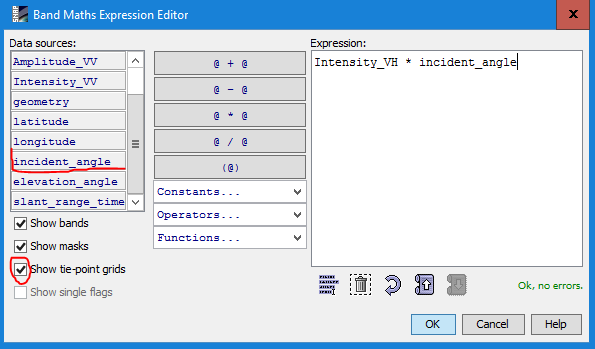this is because the raster cells in the near range are hundreds of kilometers closer to the sensor than the ones in the far range. Due to the side-looking geometry of the SAR sytstem, the angles differ so much in large data sets.
If you want the average angle of the whole image open the image statistics of your incidence angle image:
But if you need the angle for the computation of certain derivatives I highly recommend the band maths function using the incidence angles (activate ‘tie point grids’)

